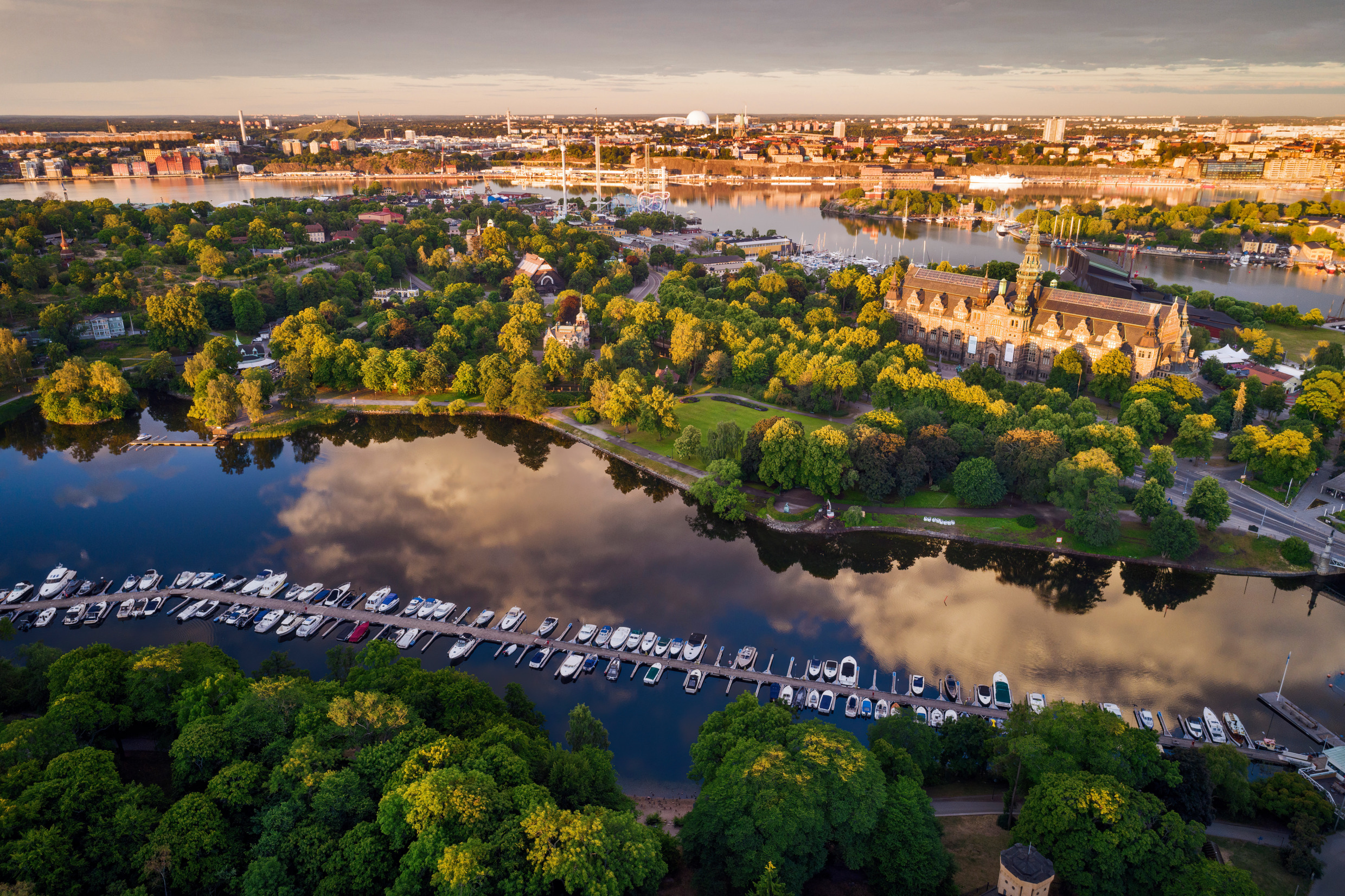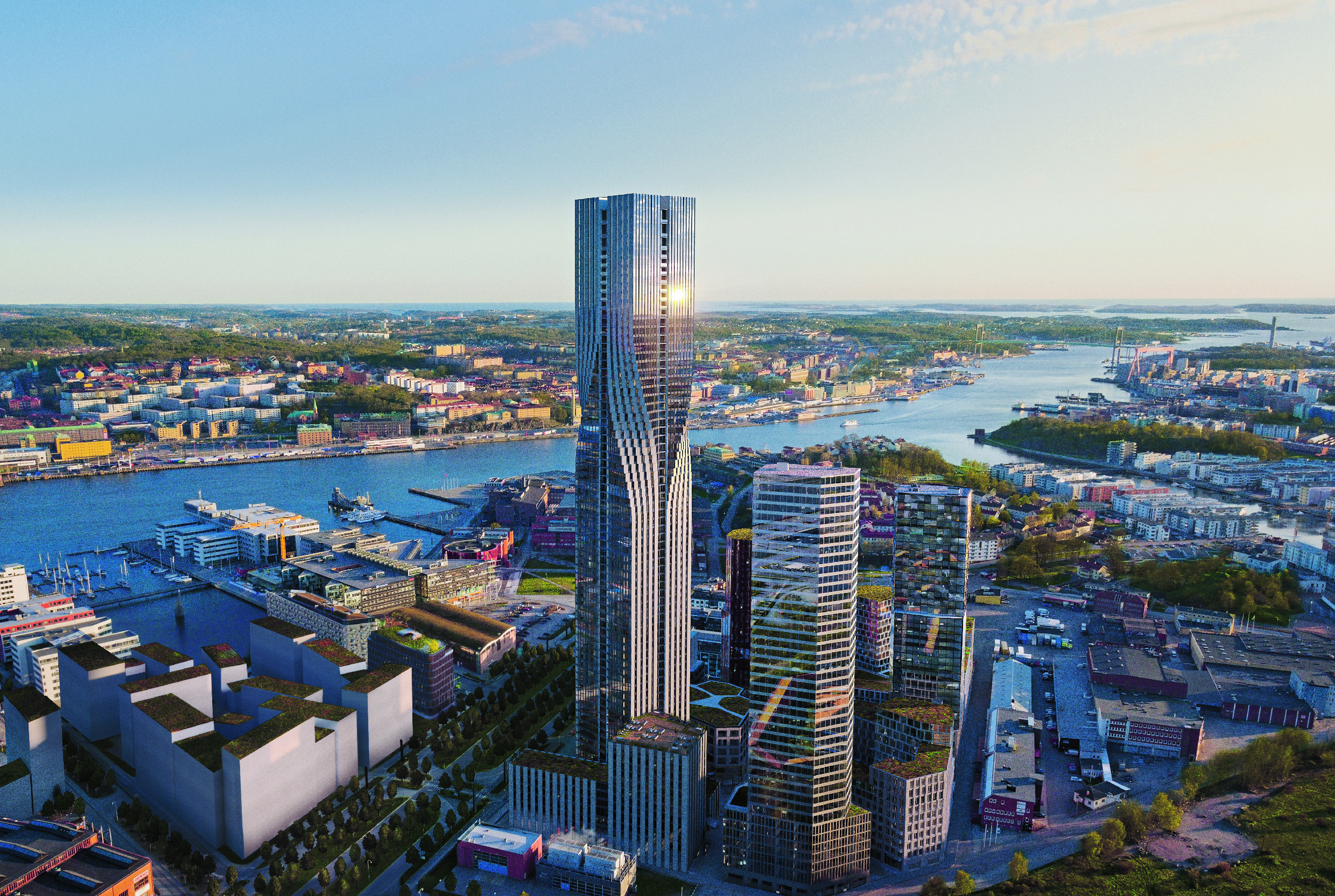
Sweden’s stone cities – a highlight of Swedish architecture
The 19th century stone cities are fascinating reminders of the urban expansion and social transformation ushered in by industrialism. You’ll find these must-see townscapes across Sweden, from Sundsvall in the north to Malmö in the south.
A product of industrialism and the urban expansion it brought with it, the so-called stone city – defined by multi-storey brick buildings and broad avenues – arose in the 19th century to accommodate the social expansion industrialism brought with it.
This architectural movement began in Europe; the urban landscapes of cities such as Paris, Vienna and Berlin – all established from the mid to the third quarter of the 19th century – inspired the Swedish stone city. Industrial hubs with enough money to transform their townscapes demolished the majority of low-rise buildings and timber houses to give way for new neighbourhoods made of stone.
Prominent city planner Albert Lindhagen was a central stone city figure – he drafted the plan for Stockholm in 1866 and was involved in a similar project in Malmö (Rörsjöstaden) in 1872.
The Swedish stone city in a nutshell
The type of historic building you’ll come across when exploring Sweden’s stone cities may vary stylistically, but most are elegantly designed in National Romantic, Nordic Classicism, Renaissance Revival and a stricter Art Nouveau style.
Construction-wise, stone city houses are defined by their multi-storey (often four levels) brick and stone profile, built to house several families or individual workers. Positioned close to one another in a grid-like street system, many houses feature inner courtyards.
The town planning structure drew on a classicist ideal, which aside from its all-important grid system and rectangular blocks, incorporated boulevards and avenues put in place to allow for increased traffic.
The number of public and commercial buildings such as banks, schools, hotels, hospitals and factories increased due to the urban growth and social transition of this period.
Originally, stone cities were found mainly in town centres, but by the beginning of the 20th century, they started spreading to the city borders and suburbs, with close proximity to factories and industrial sites. Architecturally, they looked like inner-city replicas.
These distinctive neighbourhoods remain an important part of Swedish architecture. You’ll find stone cities in and around destinations including Stockholm, Gothenburg, Malmö, Norrköping, Helsingborg and Sundsvall. Here’s an introduction to some of the most notable ones.
Midsommarkransen
Midsommarkransen, a suburb to Stockholm, was built in the early years of the 20th century.
Photo: Rosanna Andersson / Visit Stockholm

Midsommarkransen
Photo: Rosanna Andersson / Visit Stockholm

The street Snickarbacken in Stockholm
Photo: Jason Briscoe
Stone cities of Stockholm and its surroundings
Located a little south of central Stockholm, Midsommarkransen is one of Sweden’s best-known stone cities. Construction of this elegant, ochre-hued neighbourhood started in 1905 to house workers of AB Tellus brick factory. Albin Brag is the architect behind it, and his style was often described as “strict Art Nouveau” due to his favouring of balanced lines and craft-based detail. Upon a visit, you’ll note the beauty of the granite house foundations, with their rough-cut blocks of stones in varying natural shades, and the decoratively carved front doors. Several feature bay windows add to the beauty of the houses.
The local school – now housing office workers– is a historic public building to look out for. Built in 1915 by architect Georg A. Nilsson, its ornate wrought iron clock is a defining feature.
Midsommarkransen’s architect Albin Brag also created another stone city in the nearby area of Aspudden. Mariehäll, a stone city built near Ulvsunda industrial area by what is now Stockholm Bromma Airport, is also worth exploring.
Rörsjöstaden stone city in Malmö
A shallow lake was dug out to give rise to Rörsjöstaden – Malmö’s stone city. Construction began in the 1870s, using a draft by city planner Georg Gustafsson, who drew on the plans of his Parisian peer Georges-Eugène Haussmann. Built around Kungsgatan, a wide boulevard with the spectacular St. Paul's church as its crowning glory, there was a sense of drama in this urban landscape. Kungsgatan has since been divided into several individual sections, but the distinctive yellow brick church is still standing.
Continuing the historic building hunt, you’ll find the oldest houses – dating from the 1870s – on the three streets Löjtnantsgatan, Kommendörsgatan and Kornettsgatan. Aside from the great mix of residential buildings, keep an eye out for the beautiful school Pauliskolan.
The Stone City in Sundsvall
The Stone City ('Stenstaden') in Sundsvall.
Photo: FFagency

The Stone City in Sundsvall
Photo: FFagency

The Stone City in Sundsvall
Photo: Olle Melkerhed
The grand Stone City of Sundsvall
It’s impossible to discuss Swedish stone cities without mentioning Sundsvall. This important industrial town built its stunning historic centre – simply called Stone City – following a devastating fire in 1888. Sundsvall’s urban transformation resulted in 51 blocks of must-see architectural grandeur, most of which is designed in renaissance revival and art noveau style.
Wander the streets and take in the beauty of the area – from residential houses and banks to churches and hotels. If you’re curious about the historic life behind these facades you can join a guided city tour. You’ll hear stories about the servants and gentry living in Stone City , offering a further glimpse into the past of one of Sweden’s best preserved late 19th century townscapes.
You don’t need to be an architecture enthusiast to appreciate the beauty of these unique urban and suburban areas. A visit to one of Sweden’s stone cities is a worthwhile experience for anyone exploring the cityscapes of this intriguing Nordic land.





